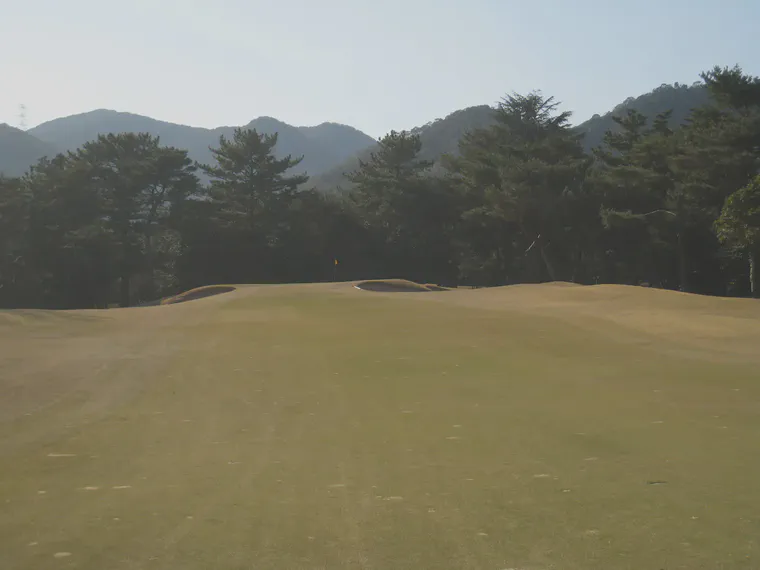Keeping turf free of weeds, diseases, and insects
Golf courses in Japan usually have creeping bentgrass greens, korai (Zoysia matrella) tees and fairways, and noshiba (Zoysia japonica) rough. The korai and noshiba will be dormant in the winter, and these grasses don’t grow much in spring or autumn even if they have some color. It’s customary to apply fungicides to prevent diseases (especially large patch and spring dead spot) from developing. It is also customary to apply pre-emergent herbicides to prevent winter annual and summer annual weeds from growing. And it is also customary to apply insecticide to prevent grubs from reaching damaging levels.
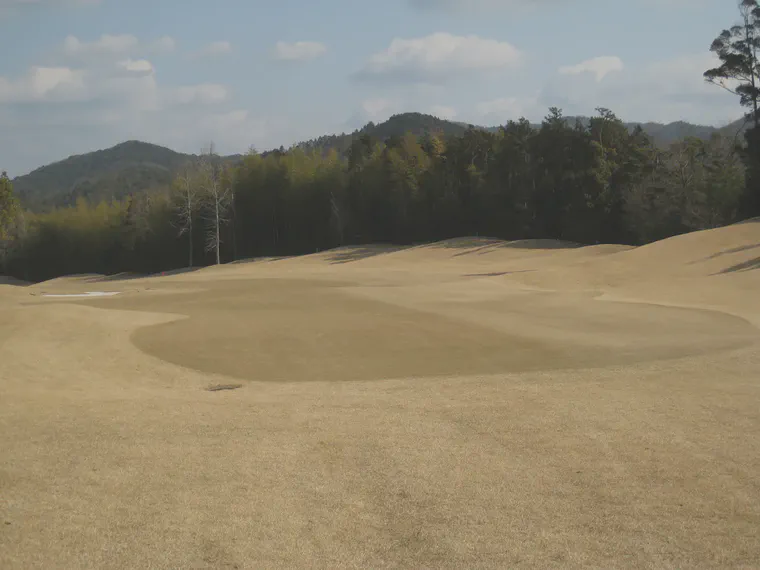
When those preventative treatments are applied with the right timing, one gets a straw-colored stand of weed-free and disease-free turf in the winter. When the products aren’t applied, then large patch and other diseases can be unsightly.
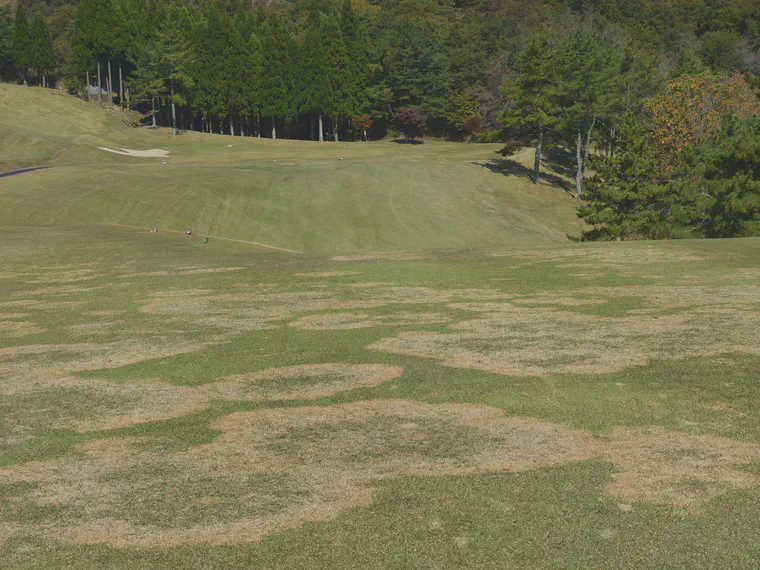
I don’t know how common it is around the world for these types of fungicide, herbicide, and insecticide applications to be made by the company that has sold the pesticides. I was traveling in western Japan, visited the main office of an agricultural supply company, and saw this “spouter” sprayer in the parking lot.
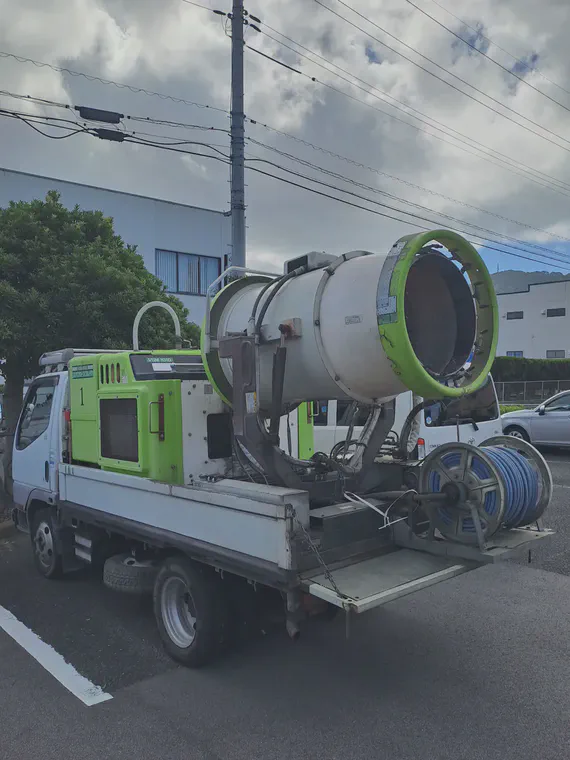
The spouter is for spraying trees, or for spraying a cloud of product up a hillside, or can even be used to put a mist of material out on fairways or rough.
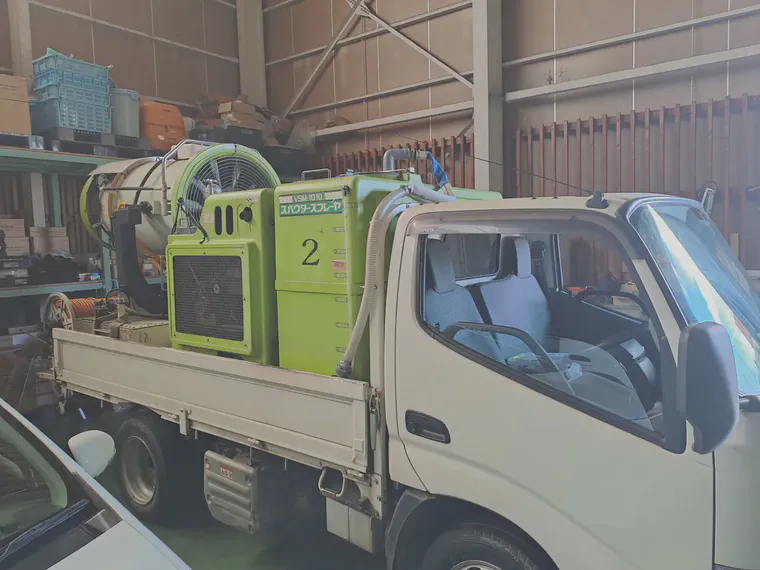
The reason these sprayers are at the distributor’s warehouse is because customers often request that the distributor not only provide the products, but apply them also. With four or five sprayers (and staff), it takes about one day to make an application to a typical 18 hole golf course. Maybe there will be another half day of work getting product applied to some hard to treat areas.
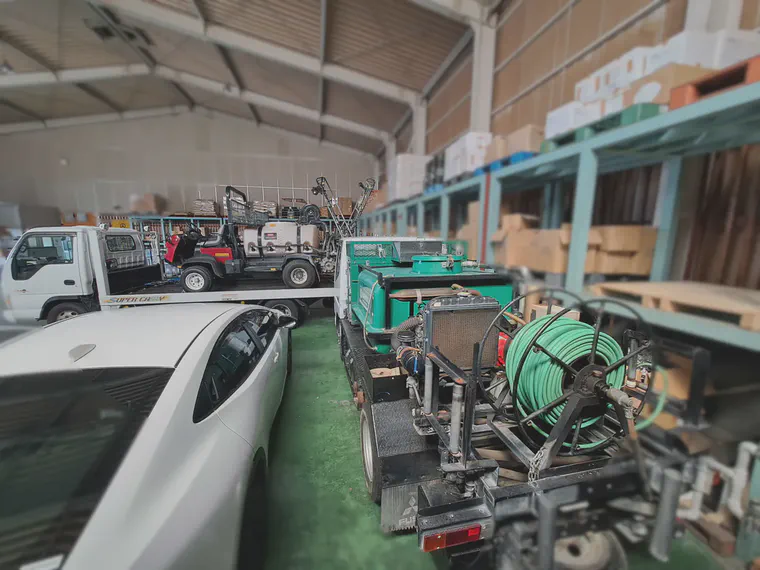
The standard type of spraying machine in Japan is not the “spouter.” It is the “tanksha.” The tanksha sprayers usually have a 1,000 liter (265 gallon) tank. The largest I’ve seen have a 2,000 liter tank. But the 1,000 L version is easy to drive on fairways and rough without much worry about tire tracking or weight.
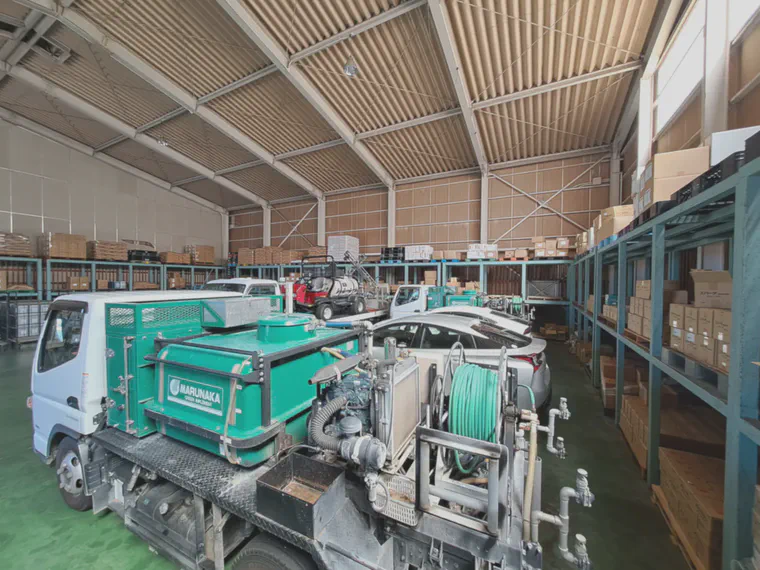
The tanksha sprayers can be fitted with a boom and multiple nozzles along the boom, although they are commonly used with boomless nozzles that spray a lot of material through just a couple nozzles (see photo below).
Tanksha sprayers also are fitted with a hose, so one can apply products through a walking boom or more typically with a wand. Between the spouters, the tankshas with their booms, boomless nozzles, and hoses, and possibly with some other types of sprayers, all areas of a property can get sprayed.
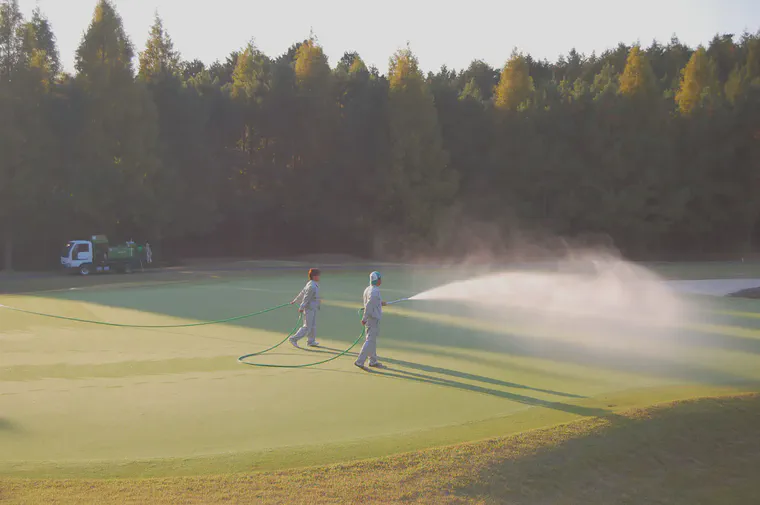
There is a small fee for the application of the products. At the time of writing, in western Japan this is about 1.2 yen/m2 to spray. This is less than USD $50 per acre (with current exchange rates it is USD $70 per hectare) to get all the product applied with a fleet of machinery, probably finishing 18 holes in a single day.
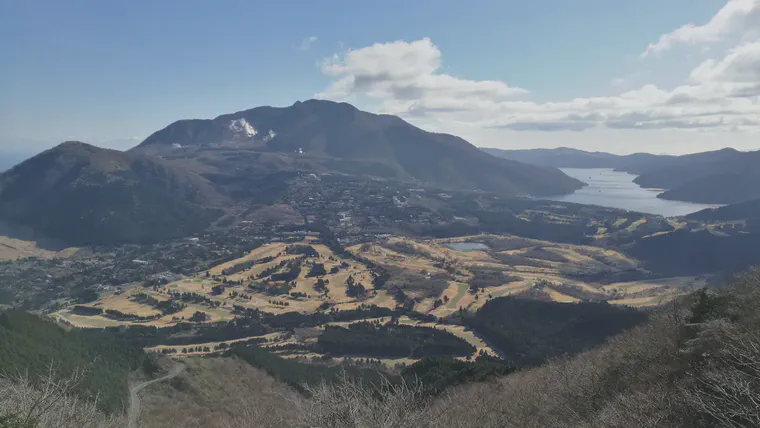
This is a nice service, and I’ve seen a lot of these distributor warehouses around Japan, and have seen the treatments being applied. The greenkeeper and the supplier will work together to choose the most effective products for each application.
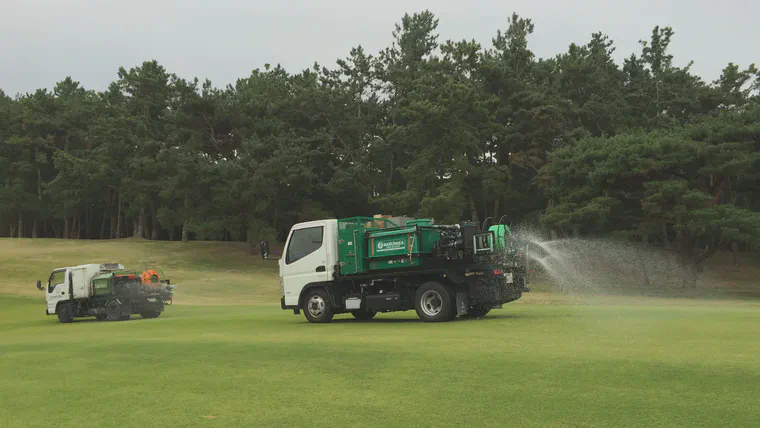
The salespeople are also the spray technicians, and they work a hard schedule especially during large patch season. Their calendars are packed with scheduled sprays at golf courses around their territory.
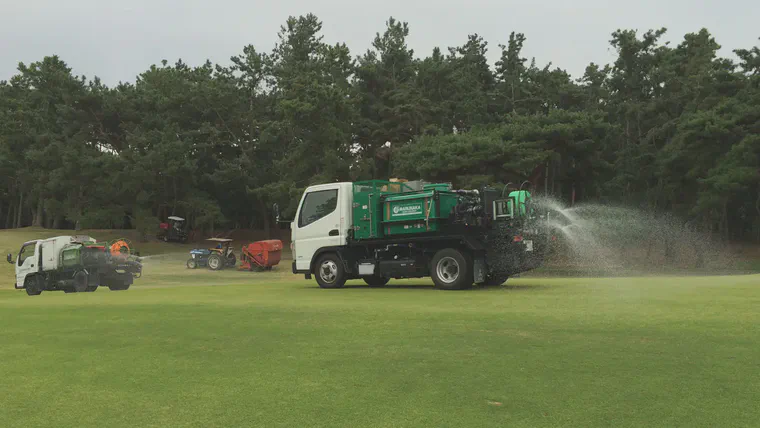
When this all works well, one ends up with the classic Japanese golfing surface. Dormant zoysia in the winter that doesn’t have disease or weeds visible. And in the summer, no lingering large patch scars, no spring dead spot, and no summer annual weeds.
